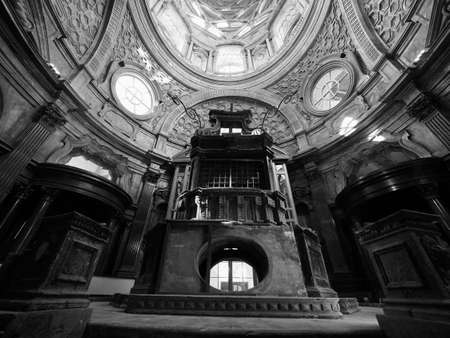Introduction: The Mystique of British Cathedrals
Stepping into the shadow of a British cathedral is to encounter more than just an architectural marvel; it is to stand within a living testament to centuries of artistry, faith, and communal identity. Across the rolling countryside and in the heart of ancient cities, these sacred structures rise as both landmarks and spiritual anchors, shaping the very silhouette of the British landscape. Their soaring spires and intricately carved stonework invite awe, drawing the eye upward and inward—a visual and spatial invitation to reflect upon mysteries that transcend time. As icons of both national heritage and spiritual devotion, British cathedrals hold a unique place in the collective consciousness, their presence woven seamlessly into daily life and ritual. In exploring their symbolism through the lenses of geomancy and sacred geometry, we unravel layers of meaning embedded in every archway and nave, illuminating how these grand edifices continue to guide, inspire, and shape the spaces around them.
2. Historical Roots: Sacred Sites and Ancient Foundations
The enduring majesty of British cathedrals is deeply intertwined with the ancient origins of their locations, where geomancy and sacred geometry have played a quiet yet profound role. Before Christianity swept across the British Isles, these lands were dotted with sites revered for their natural power—hilltops, springs, and crossroads that carried spiritual resonance for local tribes. The choice to build cathedrals atop these sites was no accident; rather, it reflected an acute awareness of the land’s existing energy and symbolism.
Pre-Christian Influences
Many cathedral foundations draw upon layers of history that predate Christianity. Pagan temples, Druidic circles, and Roman shrines often occupied these liminal spaces, believed to be portals between worlds. When Christian builders arrived, they did not simply erase the past—they ingeniously incorporated it, transforming ancestral places of worship into new centres of faith while retaining their mystical significance.
The Interplay of Legend and Local Lore
Legends abound regarding the selection of cathedral sites. From tales of angels marking out blueprints overnight to stories of miraculous wells springing forth at chosen locations, folklore weaves itself into the fabric of these grand structures. Local stories recount how saints received divine visions instructing them where to build, reinforcing the belief that these sites were destined for sacred use long before stone met mortar.
Comparing Cathedral Sites: Layers of Meaning
| Cathedral | Pre-Christian Site | Legend/Lore | Sacred Geography Feature |
|---|---|---|---|
| Canterbury Cathedral | Pagan place of assembly | St Augustine’s vision led him to a site marked by ancient trees | Sits on powerful ley line intersection |
| Durham Cathedral | Druidic high ground | A dun cow guided monks to St Cuthbert’s resting place | Prominent hill overlooking river bend |
| St Paul’s Cathedral (London) | Roman temple dedicated to Diana | Legendary apparition directed construction after fire destroyed original church | Crowning Ludgate Hill, London’s highest point |
| Wells Cathedral | Sacred spring site | Miraculous well associated with healing properties | Nestled around ancient wellhead |
This confluence of ancient reverence and Christian purpose created cathedrals that are far more than architectural marvels—they are living palimpsests, inscribed with centuries of spiritual practice and local myth. Their very stones echo with echoes from Britain’s deep past, grounding sacred geometry in a context both historic and profoundly mystical.

3. Geomancy: The Art of Earth and Energy
To truly appreciate the symbolism woven into British cathedrals, one must first explore the ancient art of geomancy—a practice rooted in reading and responding to the energetic qualities of the land. Medieval cathedral builders were far more than mere architects; they were interpreters of the British landscape, attuned to subtle energies, alignments, and the spiritual resonance of place.
The Wisdom of Placement
Cathedrals across Britain are rarely found at random. Their sites were chosen with care, guided by a sophisticated understanding of geomantic principles. Practitioners—whether monks, masons, or learned clergy—studied the topography, watercourses, and natural features to locate spots where energy converged or flowed freely. These chosen grounds were believed to be ‘thin places’, where heaven seemed closer to earth, and spiritual experience was heightened.
Ley Lines: Pathways of Power
A central concept in British geomancy is the idea of ley lines—mysterious straight alignments that connect ancient monuments, standing stones, and sacred sites. While their existence remains debated, many cathedrals appear aligned with these invisible currents. By situating their great churches along these lines, medieval builders sought to anchor their structures in a network of power that stretched across the countryside, enhancing both the sanctity and communal significance of each site.
Harmony with Nature
This geomantic sensitivity extended beyond mere placement. The orientation of cathedrals—often towards sunrise on key feast days—reflects a dialogue with natural cycles and celestial events. Builders incorporated local stone and responded to the contours of hills or river bends, allowing each cathedral to nestle organically within its environment. In doing so, they created spaces that not only commanded awe but resonated deeply with the rhythms and spirit of the British land itself.
4. Sacred Geometry: Design, Harmony, and Symbolism
British cathedrals are masterpieces where sacred geometry breathes life into stone, wood, and glass. This ancient art form is not merely decorative; it imbues these spaces with harmony, balance, and a deep spiritual resonance that echoes through every nave and cloister. Architects of the medieval era were keenly aware of geometry’s divine principles—using them as both blueprint and symbol to craft places that elevate the human spirit.
Geometric Patterns at the Heart of Design
Sacred geometry in cathedral architecture is evident in the recurring use of shapes such as circles, triangles, and squares—each carrying profound symbolic meaning. The circle, often seen in rose windows or domes, represents eternity and unity. Triangles point to the Holy Trinity, their threefold structure woven into vaults and tracery. The square grounds these lofty ideals with a sense of earthly order.
Key Proportions: The Divine Ratio
Proportion plays a critical role in creating the unique atmosphere of British cathedrals. Many designs are based on the “Golden Ratio” (approximately 1:1.618), believed to mirror nature’s own perfection. This ratio can be found in everything from floor plans to elevations—ensuring each element harmonises with the whole.
| Geometric Shape/Ratio | Symbolic Meaning | Architectural Application |
|---|---|---|
| Circle | Eternity, Unity | Rose windows, domes, apses |
| Triangle | The Trinity, Stability | Vaulting patterns, gables |
| Square | The Earth, Foundation | Pavement layouts, towers |
| Golden Ratio (1:1.618) | Harmony with Nature | Nave proportions, window sizing |
An Interplay of Light and Space
Sacred geometry also guides how light moves within these vast interiors. Carefully calculated angles allow shafts of sunlight to illuminate altars or chapels at specific times of day or year—creating moments of awe that reinforce spiritual symbolism. The interplay between geometric precision and natural illumination transforms stone into something ethereal.
This meticulous attention to design ensures that visitors do not simply see a cathedral—they experience it as a living testament to harmony between heaven and earth. Sacred geometry is thus not just an architectural tool but a language through which British cathedrals speak to all who enter.
5. Symbolic Embodiment: Spiritual Encounters in Stone and Light
Stepping into a British cathedral is to enter a realm where stone, glass, and light are orchestrated to evoke profound spiritual resonance. The architecture is not merely functional; it is symbolic in every sense, inviting worshippers and visitors alike to engage with the space both sensorially and spiritually.
The Soaring Vaults: Reaching for the Divine
Every glance upward is met by a ceiling that seems almost impossibly high, its ribbed vaults and pointed arches drawing the eye—and the spirit—toward the heavens. This verticality is far from accidental; it embodies the medieval aspiration to bridge earth and sky, guiding worshippers’ thoughts away from earthly concerns and towards contemplation of the divine. In these spaces, scale itself becomes a language of awe, humility, and reverence.
The Dance of Light: Stained Glass Narratives
Intricate stained glass windows punctuate these sacred interiors, transforming sunlight into kaleidoscopic tapestries that spill across ancient flagstones. Each window is more than mere decoration; it is a storytelling medium, recounting biblical tales, saints’ lives, or moral lessons through colour and form. As daylight shifts, so too do these illuminated narratives, reminding all who enter that spiritual truths are not static but alive, refracted through the passage of time.
The Sensory Symphony: Atmosphere and Presence
The sensory experience within a cathedral is a carefully orchestrated symphony: the echo of footsteps on cold stone, the faint scent of incense lingering in the air, the interplay of shadow and illumination. These elements together create an atmosphere charged with meaning—an invitation to pause, reflect, and connect with something greater than oneself. The very materials—carved limestone, polished marble, leaded glass—hold centuries of devotion within their textures and forms.
Symbolism in Every Detail
From the geometric precision of floor tiles arranged in labyrinthine patterns to carved bosses depicting flora and fauna on vaulted ceilings, every detail serves as a visual metaphor for faith’s mysteries. The alignment of nave and altar often follows principles of geomancy or sacred geometry, embedding cosmic order into architectural form. For those attuned to these cues, British cathedrals reveal themselves as spaces where symbolism is not abstract but embodied—in stone and in light—offering continual opportunities for spiritual encounter.
6. British Identity: Cathedrals in Community and Culture
Stepping into the cool, echoing nave of a British cathedral, one cannot help but sense the weight of history and belonging these sacred spaces embody. From York Minster to Canterbury Cathedral, these architectural masterpieces are far more than mere monuments; they are living testaments to the British spirit, woven seamlessly into the fabric of community life and collective memory.
Anchoring Cultural Identity
British cathedrals anchor identity by serving as silent witnesses to centuries of societal change. Their soaring spires and labyrinthine cloisters have watched over coronations, memorials, and revolutions alike. The sacred geometry embedded within their design—arches that draw the eye heavenward, naves that channel light and energy—reflects not only spiritual aspiration but also a uniquely British approach to unity and resilience. These structures invite contemplation on what it means to belong, linking generations through shared rituals and annual festivals.
Gathering Spaces for All
Far from being relics of the past, cathedrals remain vibrant gathering places at the heart of towns and cities across Britain. Market days spill into cathedral greens; choirs rehearse beneath stained glass; communities unite for celebrations and solace within ancient walls. Through weddings, christenings, and remembrance services, cathedrals become the backdrop for personal milestones, rooting individuals in a broader narrative of national heritage. Their open doors symbolise welcome—a space where all can seek meaning, refuge, or inspiration.
Enduring Symbols of Heritage
The enduring presence of these cathedrals is itself a form of cultural geomancy—a careful placement within the landscape that resonates with local tradition and national pride. As icons on postcards and backdrops to state occasions, they remind Britons of their shared past while offering hope for continuity amid uncertainty. In every weathered stone and intricate vault, one finds echoes of collective memory: stories carved in limestone, identities shaped beneath vaulted ceilings. British cathedrals thus stand not only as feats of sacred geometry but as beacons guiding communities towards cohesion and shared purpose—true symbols of enduring heritage.
7. Contemporary Resonance: Cathedrals Reimagined
While the soaring spires and intricate floorplans of British cathedrals are rooted in centuries-old symbolism, their resonance has not faded with time. In modern Britain, these monumental spaces are continually reinterpreted, evolving from their origins as purely religious sanctuaries to become vibrant cultural anchors within their communities. The original geomantic placements—chosen for spiritual significance—now also invite reflection on sustainability, urban regeneration, and inclusive public space.
The Cathedral as a Living Space
Across the UK, cathedrals have embraced new identities while honouring tradition. Many now host concerts, art installations, and community gatherings, weaving contemporary life into ancient stone. This adaptive reuse is more than pragmatic; it channels the cathedral’s historic role as a civic heart, while also fostering dialogue between past and present design philosophies. The interplay of sacred geometry with modern acoustic engineering or lighting design creates immersive experiences that highlight both heritage and innovation.
Conservation and Adaptive Stewardship
Preserving these architectural treasures requires both reverence and ingenuity. Conservationists employ cutting-edge technology alongside time-honoured craftsmanship to maintain structural integrity and visual splendour. Digital modelling reveals hidden alignments once mapped by geomancers, while sustainable materials ensure these spaces endure for future generations. This stewardship reflects a broader British ethos: a respect for history intertwined with a drive for renewal.
A Catalyst for Contemporary Design
Modern architects and designers frequently look to cathedrals for inspiration—drawn to their harmonious proportions, axial precision, and transformative spatial qualities. Concepts such as light-filled naves or labyrinthine floor patterns echo in new public buildings, galleries, and even urban parks across Britain. The legacy of sacred geometry thus persists not only in bricks and mortar but also in the country’s ongoing pursuit of beauty, balance, and meaning within built environments.
In sum, British cathedrals remain potent symbols—rooted in geomancy yet open to reinterpretation—serving as dynamic forums where heritage shapes contemporary culture and design dialogues thrive.


